#large milkweed bug
Text
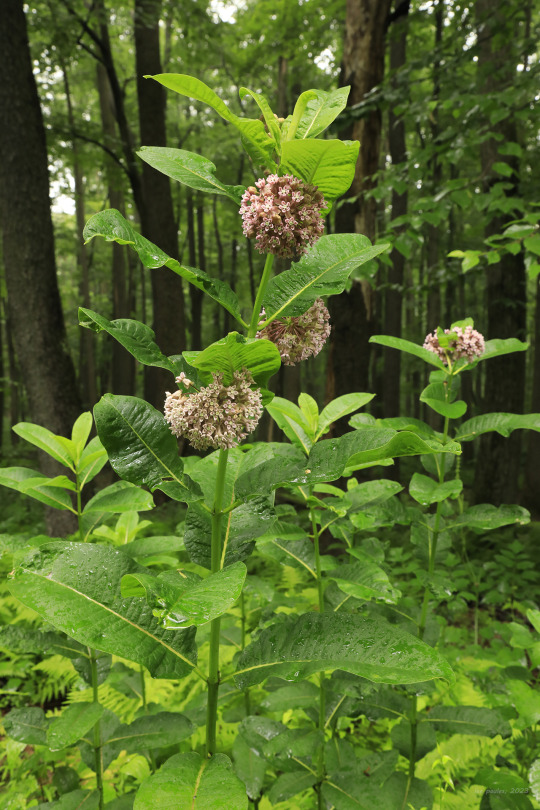

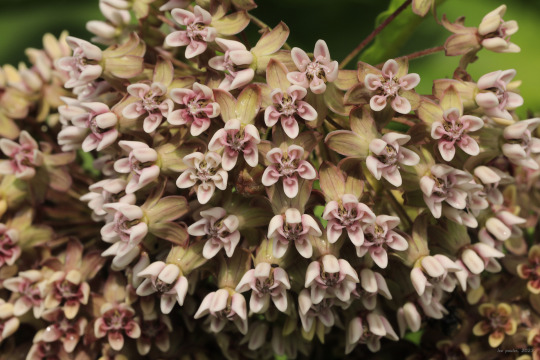

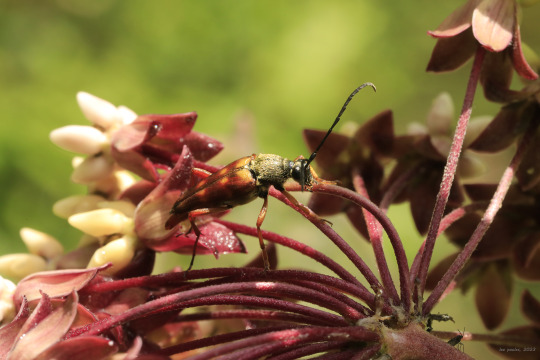
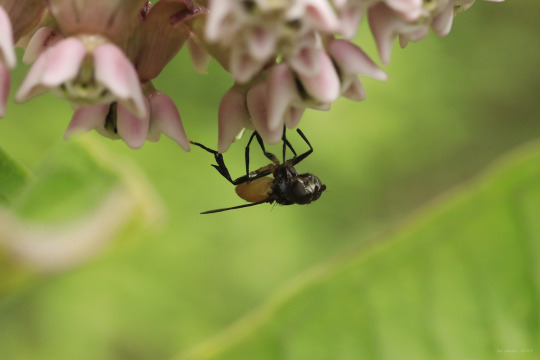
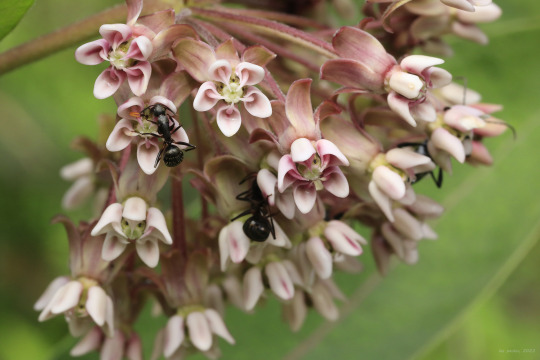
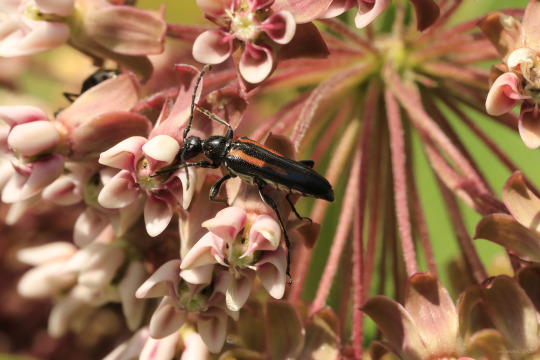

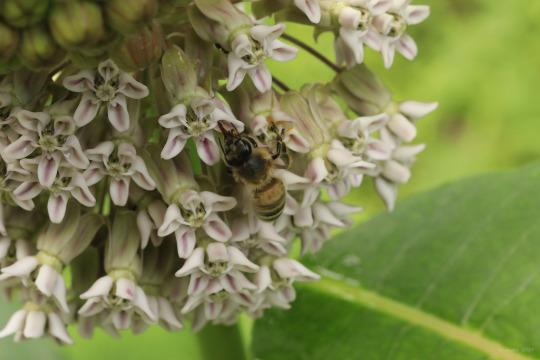
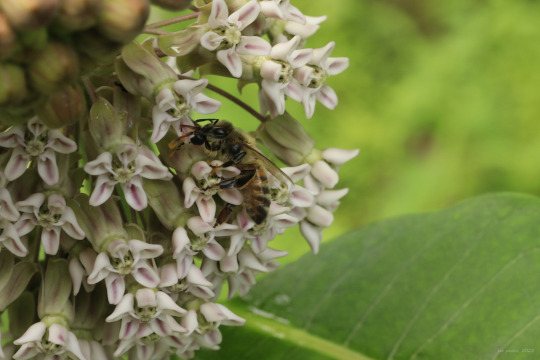

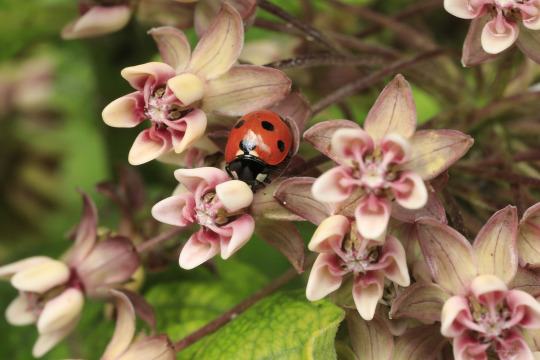


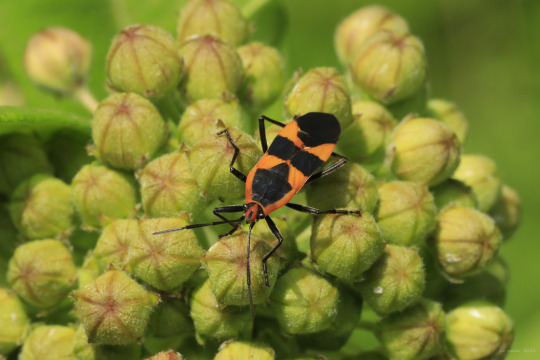
“In planning to be a professional naturalist….. I turned to the teeming small creatures that can be held between the thumb and forefinger, the little things that compose the foundations of our ecosystems, the little things that I like to say, run the world.”
Edward O. Wilson
By observing a milkweed plant very closely for more no more than five minutes, you will begin to understand exactly what Wilson was getting at.

#wildflowers#flora#appalachia#vandalia#west virginia#coopers rock state forest#summer#common milkweed#life#diversity#biodiversity#ecology#insects#the little things#life is beautiful#life is fragile#large milkweed bug#longhorn beetle#honeybee#milkweed weevil#seven-spotted ladybug#net-winged beetle#edward o. wilson#e. o. wilson
202 notes
·
View notes
Text
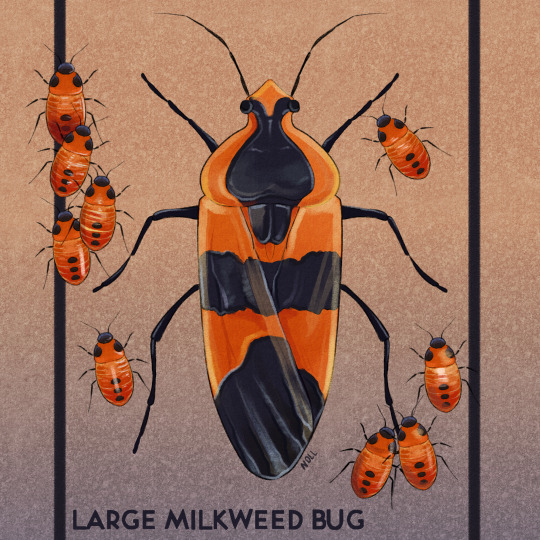
InsertAnInvert2024: Babies
#my art#digital art#illustration#sciart#large milkweed bug#bugs#animals#nature#nature art#science art#field guide#digital artist#krita#insertaninvert2024#insertaninvert#artblr
31 notes
·
View notes
Text

Large milkweed bugs (Oncopeltus fasciatus) in Wood Dale, Illinois, USA
by Olaf Nelson
#large milkweed bug#seed bugs#oncopeltus fasciatus#oncopeltus#Lygaeidae#hemiptera#insecta#arthropoda#wildlife: illinois#wildlife: usa#wildlife: north america
40 notes
·
View notes
Text




Submitted by @allisonsaidthis without comment! Some very lovely true bugs :)
63 notes
·
View notes
Text

10/13/23: Large Milkweed Bug (Oncopeltus fasciatus)
#bug of the day#large milkweed bug#Oncopeltus fasciatus#done with graphite and orange highlighter on a sticky note#saw a lot of these guys while doing my research project!#been meaning to get back on here and I thought an orange and black bug would be perfect for the spooky season#especially with todays date!
3 notes
·
View notes
Text

Large Milkweed Bug, Oncopeltus fasciatus
4 notes
·
View notes
Text

Adult Lygaeus kalmii (bottom) with nymph Oncopeltus fasciatus (top) on Asclepias / Adult Small Milkweed Bug (bottom) with nymph Large Milkweed Bug (top) on Milkweed at the Sarah P. Duke Gardens at Duke University in Durham, NC
#Lygaeus kalmii#Oncopeltus fasciatus#Asclepias#Small Milkweed Bug#Large Milkweed Bug#Milkweed Bug#Milkweed#Native plants#Common milkweed Bug#Native insects#insects#bugs#Nature photography#Sarah P. Duke Gardens#Duke Gardens#Duke University#Durham NC#Durham#North Carolina
1 note
·
View note
Photo

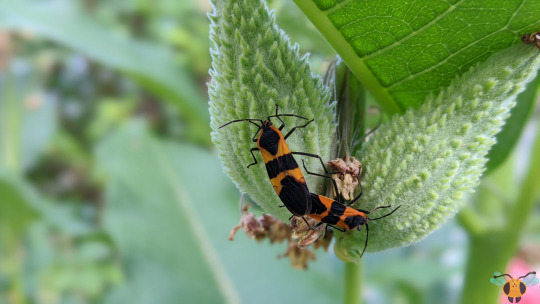

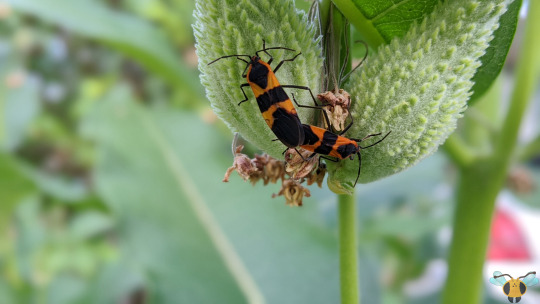
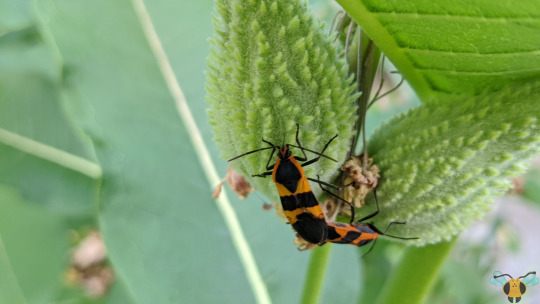

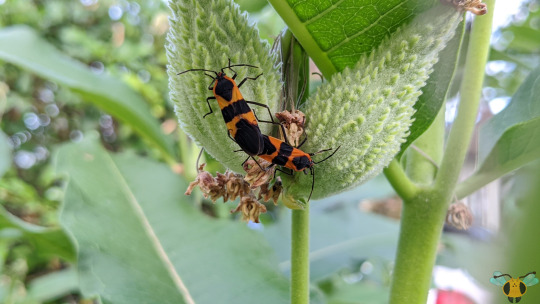

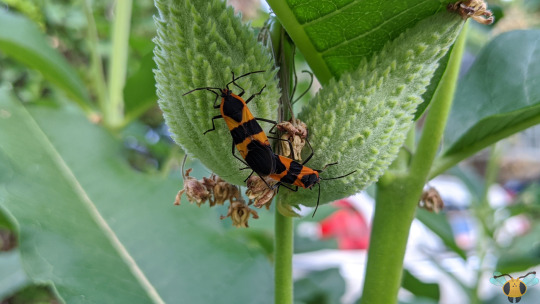
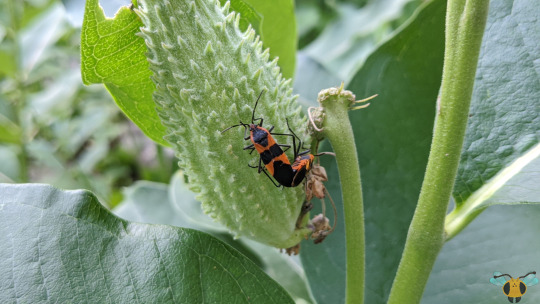
Large Milkweed Bug - Oncopeltus fasciatus
Though orange-colored rather than red and they lack the “heart-shaped” patterns that their Smaller relatives have, I wish I’d have remembered this set of images for a Valentines post. Insect mating pairs always make for a fun (and fitting) showcase for the day of loving, and yet somehow these were missed. Looking at them more closely, the images I’ve gathered here are very similar to each other, so maybe the set isn’t so dynamic. Hopefully the picture of the nymphs that various instars (Picture 6) can break up the monotony and provide insight into the life cycle of this brightly-colored Seed Bug. The deep red of the youngest nymphs gives way to orange in later instars and a black pattern gradually begins to appear. The latter will be kept throughout the life of the adult and the red color manifests itself in another place: the face. It’s genuinely amazing how the colors of the insect are organized and distributed as one instar becomes another and milkweed juices and seeds are consumed. Like the more familiar and more glamorous milkweed lover, the Monarch Butterfly, their vibrant orange coloration is a result of their diet and warns would-be predators that they are distasteful and shouldn’t be eaten.
Come to think of it, their color scheme is very similar, so there could be many common factors in milkweed toxin integration to their bodies despite the different parts of the plant that are consumed (leaves vs. seeds and plant juices). Having said that, unlike Monarch Caterpillars which can start feeding immediately after hatching, the Milkweed Bug nymphs will have to work harder to get the best nutrition they can. Upon hatching, their rostrums are too short to pierce through the milkweed pods to feast on the seeds within. Furthermore, if they hatch too early they’ll need to rely on the milkweed’s buds for nutrition, and while suitable it’s not as fulfilling as the seeds are. As such, these seed feeders will look for any opportunity to breach the seed pods for the prizes inside. If a pod is already open, so much the better, but if not there are thin spots and weak points that can be jabbed. If the nymphs can survive to instar 4, no more feeding problems will be had, and adults can feed however they please.
Pictures were taken on July 18 and October 24, 2020 with a Google Pixel 4. For more information, I recommend checking out this article by Carol Pearson Ralph on how Large Milkweed Bugs and milkweed plants interact with each other and regulate each other to a degree.
#jonny’s insect catalogue#ontario insect#large milkweed bug#seed bug#hemiptera#heteroptera#true bug#insect#mating pair#toronto#july2020#october2020#2020#entomology#nature#invertebrates
1 note
·
View note
Text


Working on my bug photography
2 notes
·
View notes
Text

with the taste of ur lips im on a ride
8 notes
·
View notes
Text
Large Milkweed Bugs in Eastham 09/08/22
Large Milkweed Bugs in Eastham 09/08/22

View On WordPress
1 note
·
View note
Text
today’s best bug encounter was this Prionus laticollis. a large longhorn beetle that feeds on dead tree roots, they are one of the largest commonly encountered beetles around here.
some impressive shearing jaws on this lady

my favorite cerambycid trait is their wraparound eyes, which curve from the top of their head around the base of the antenna to the bottom surface of the head.
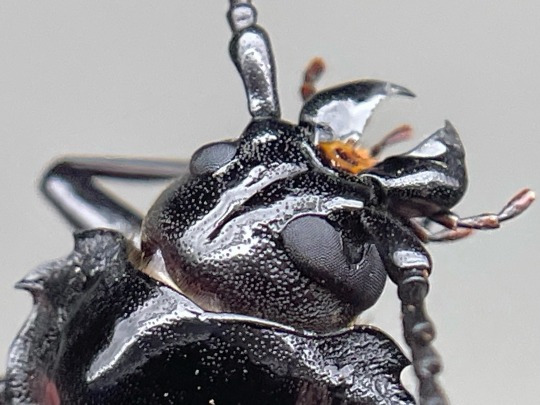
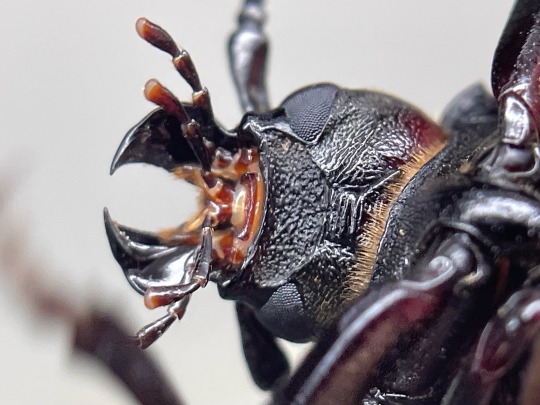
next time I’m in the milkweed field I’ll try to find another commonly spotted longhorn with even stranger eyes!
2K notes
·
View notes
Text


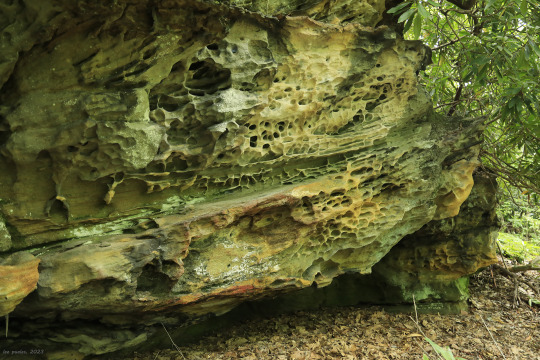

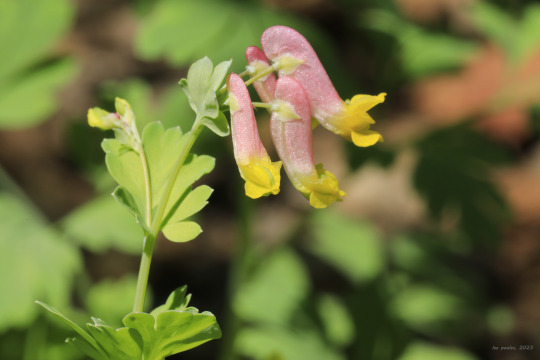
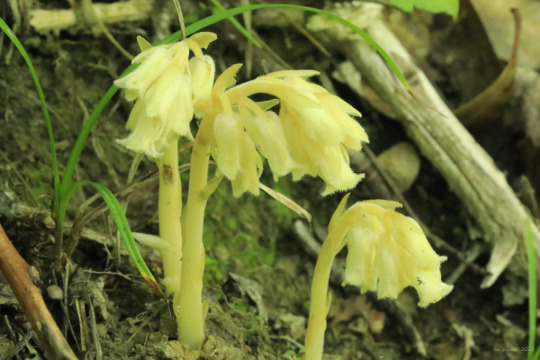










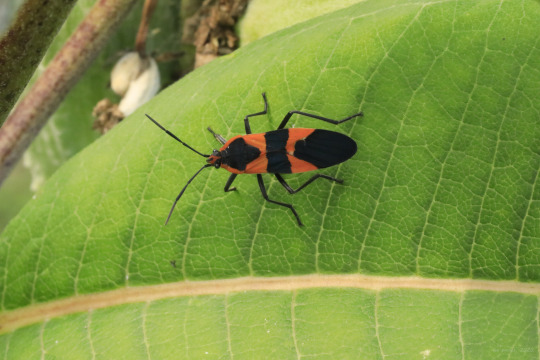
A hike in the Cheat River Canyon on a hazy, mid-summer day brings a great many rewards, both large and small.
From top: Fractured and pitted sandstone gives testimony to the canyon's ancient struggle with the elements; black cohosh (Actaea racemosa or Cimicifuga racemosa), whose towering flower spikes stalk the old woods like magical beings; the colorful rock harlequin (Corydalis sempervirens), an endangered fumitory that haunts the canyon's rocky outcrops; pinesap (Monotropa hypopitys), a parasitic plant closely related to Indian pipe; spotted St. John's wort (Hypericum punctatum), which is distinguished from the invasive St John's wort (Hypericum perforatum) by the numerous black dots on its flowers and leaves; downy rattlesnake plantain (Goodyera pubescens), a shade-tolerant terrestrial orchid that favors oak-hickory woods; shrubby St. John's wort (Hypericum prolificum), a mounding, deciduous shrub of open, sandy woods; orange-fringed orchid (Platanthera ciliaris), a stunning late summer beauty of Appalachia's moist meadows and open woods; a hummingbird clearwing moth (Hemaris thysbe) visiting a late-blooming milkweed; a silvery checkerspot (Chlosyne nycteis) drinking up the nectar of a butterfly milkweed (Asclepias tuberosa); an American green crab spider (Misumessus oblongus) stalking a black-eyed Susan for its next meal; a large milkweed bug (Oncopeltus fasciatus) being perfectly beautiful on a lazy summer day; and last but not least, a hulking patch of eastern Jack-0'-lanterns (Omphalotus illudens), which contrary to what field guides say have never glowed in the dark for me (I love the toxic little beauties nonetheless).

#appalachia#vandalia#west virginia#wildflowers#flora#summer#snake hill wildlife management area#cheat river canyon#chestnut ridge#fungi#insects#orchids#black cohosh#rock harlequin#pinesap#spotted st. john's wort#downy rattlesnake plantain#shrubby st. john's wort#orange-fringed orchid#hummingbird clearwing moth#silvery checkerspot#butterfly milkweed#american green crab spider#large milkweed bug#jack o' lantern#lepidoptera
173 notes
·
View notes
Text

@blueberryrock submitted: Is there any way you could id this lil fella? They were about a usd quarter-sized and ate so many flies and roly polys lol so they were pretty big and was upset when i had to move them outside, i found him in [removed] if you could redact that pls!
I also found this lil guy in my grandparents house!

Wow, thick. I love this enormous fella. I'm afraid without a clearer photo, I can't tell you what they are, though, other than a jumper! I'd need to be able to make out some markings. Some of the Phidippus jumpers in your area could get that large, but I'd expect to see some identifiable markings and it looks pretty solidly tan. So all I can say is that they are a friend :)
The other fella, though, I can tell you looks like a milkweed assassin bug nymph.
#animals#insects#bugs#spider#arachnids#submission#true bugs#assassin bug#milkweed assassin bug#jumping spider
69 notes
·
View notes
Text
Bugs!!!!





I believe it's a honey bee in the first photos!
The second is a large Milkweed bug!
And the moth is a painted tiger moth!
And a tarantula under the cut!!!!
A friend!!!!!!



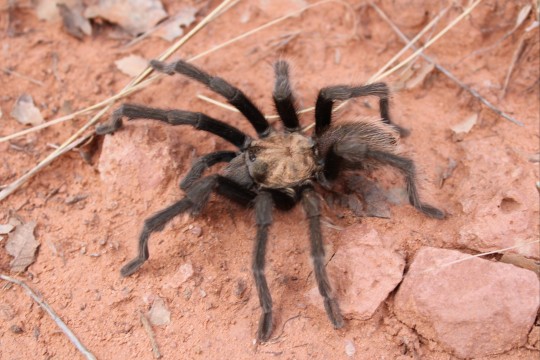
I believe this is a common desert tarantula!
13 notes
·
View notes
Photo



A triumvirate of red milkweed insects:
Large Milkweed Bug (Oncopeltus fasciatus)
Red Milkweed Beetle (Tetraopes tetrophthalmus)
Swamp Milkweed Leaf Beetle (Labidomera clivicollis)
June 2, 2022
Southeastern Pennsylvania
#Milkweed is not just for monarchs#the leaf beetle looks orange but most of them are darker#bug#bugs#photographers on tumblr#insect#insects#beetles#milkweed#nature#animals#entomology#bugblr#red
268 notes
·
View notes